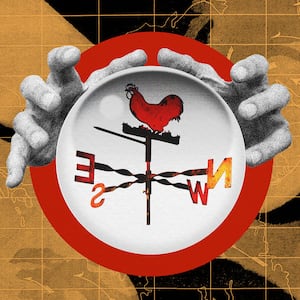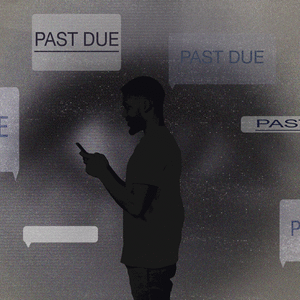There’s an old joke: The weatherman is the only job where you can be wrong 50 percent of the time and still keep your job. Meteorology has since improved a lot since that old chestnut was funny, but it still highlights a very real truth about weather prediction: It’s hard as hell.
Meteorologists need to track and account for multiple different variables ranging from temperature to humidity to air pressure, and many more. These conditions can range drastically from place to place, even if they’re within a few miles from one another. So predicting what the weather will be is like trying to hit a moving target that’s also changing shape, size, and consistency all at once.
Currently, one of the best and most common ways to predict weather is with numerical weather prediction. This is a method of using equations to simulate the physics and fluid dynamics of future atmospheric conditions. It’s an incredibly energy- and resource-intensive way of forecasting, often requiring very powerful computers to assist in the modeling.
Even with the advancement of supercomputers being used in meteorology, these predictions can still take days to simulate depending on how far out things are being forecasted. The accuracy of the predictions go down the further out it attempts to forecast. This often becomes a huge issue when we have looming natural disasters like hurricanes or tornadoes where data is needed sooner rather than later, and each second could mean the difference between people dying or surviving.
That’s why scientists have begun turning to artificial intelligence (AI) to assist in weather forecasting. In two papers published July 5 in the journal Nature, researchers describe two new methods of creating highly accurate and fast weather predictions up to six days in advance. The approaches could speed up extreme weather forecasting by orders of magnitudes.
“AI offers new opportunities for numerical weather prediction,” Lingxi Xie, a senior researcher at Chinese tech company Huawei Inc. and co-author of one of the papers, told The Daily Beast in an email. “AI will not replace traditional methods, but will be integrated with them towards a hybrid forecast system.”
Xie added, “We advocate for meteorologists to embrace AI methods and the new opportunity so that we can together improve human weather forecasting skills.”
The first paper describes an AI model dubbed Pangu-Weather created by Huawei. This system can predict global weather patterns up to a week in advance. The model was trained using 39 years of global reanalysis weather data, which is a combination of historical observational weather data with forecasting models.
Xie said that Pangu-Weather “surpasses the accuracy of conventional physics-based methods in reanalysis weather data.” He added that it was 10,000 times faster than conventional methods, which should be able to cut down the time it takes to analyze and forecast weather from hours or days to seconds.
On top of that, the paper’s authors also said that the model was often more accurate than traditional weather prediction systems. In fact, it was even able to track the path of a tropical cyclone—even though it hadn’t been trained on that type of data in the first place.
This phenomenon is known as emergent behavior: when a technology or system performs an action that wasn’t intentionally programmed into it. It might seem scary, but it’s actually due to the fact that the underlying model was capable of making generalized predictions based on its training on physics and fluid dynamics.
“Pangu-Weather is the first AI method that surpasses the accuracy of conventional physics-based methods in reanalysis weather data,” Xie explained. “It shows promising ability in predicting extreme weather events, especially in tracking tropical cyclones.”
The second paper describes an AI model called NowcastNet that forecasts in the short term up to six hours ahead. It can give more accurate and detailed information regarding current observational weather data. In fact, 62 professional meteorologists evaluated the model and ranked it first in 70 percent of cases against other weather forecasting methods.
“NowcastNet provides skillful forecasts at light-to-heavy rain rates, particularly for extreme precipitation events accompanied by advective or convective processes that were previously considered intractable,” the study authors wrote.
While that might seem less useful at first blush, the study’s authors said that it can be incredibly useful when it comes to disaster prevention in situations of “extreme precipitation.” If you had six hours to prepare for a potential flash flood, you’d be able to evacuate specific regions and neighborhoods—or at least give people more warning.
It’s exciting—but, if the past few months are any indication, it will no doubt bring thoughts of, “The robots are stealing my local news station weather person’s job!” or even, “The robots are going to try and use deadly weather to kill us all!” In reality, models like both NowcastNet and Pangu-Weather will become more like an additional tool that meteorologists can use than replacing their roles entirely.
“The good news about AI for weather forecasting is that it’s, for lack of a better term, dumb AI,” Nick Lilja, an atmospheric scientist and managing meteorologist for NickelBlock Forecasting who was not involved with either study, told The Daily Beast. “It’s not going to take our nuclear codes or enslave all of humanity. It’s a glorified linear regression,” referring to a type of analysis used to predict a relationship between two variables.
Lilja added that meteorologists like him already use a host of AI tools on a regular basis to assist with their weather modeling. However, both Pangu-Weather and Nowcast Net’s systems represent a massive improvement over current models if they do actually prove to be accurate and fast—and that hasn’t necessarily been proven quite yet.
The authors for both models were sure to add that there were a few limitations for both models that should be taken into account. For example, the creators of Pangu-Weather note that the system was trained on reanalysis data, but most forecasting systems used work on observational data (data that can be immediately observed like temperature and humidity).
That means the use of AI models to divine the weather might be very limited in its applications and uses. They might also end up being less accurate than it seems at first blush. Future versions of these models would need to take into account observational data as well. “The major question that is still TBD is how accurate is it when it’s fed observational data instead of reanalysis data,” Lilja said.
The Pangu-Weather model also doesn’t take into account certain weather variables like precipitation. This greatly limits its ability to make accurate predictions of certain extreme weather events like tornado outbreaks.
“I would still like to see more and more research done to make sure that it’s accurate across all situations and not just a few situations that were shown in the single paper,” Lilja said.
However, he added that both models are an incredible achievement in their own right. There are still a lot of limitations, and there’s more work needed to be done before these models can be employed effectively to help predict extreme weather events—but it’s a “fantastic start,” Lilja said.
It goes to show that AI isn’t always necessarily scary. In fact, there are many uses for the technology that have nothing to do with self-piloting fighter jets, job-stealing chatbots, or extinction-causing robots. In fact, it could play a huge role in helping you avoid the next deadly hurricane or tornado one day soon.
Lilja likens it to the early days of computer weather forecasting in the 1970s and 1980s. Back then, it could predict weather just a few days in advance. Even then, it would often be inaccurate.
“I think we’re in a similar situation,” Lilja explained. “We’re so early in the game that the added value is currently very low. Eventually, though, it’ll be like your weather forecast you see on the news and it’ll become another tool in our tool belt that helps make weather forecasts better.”













